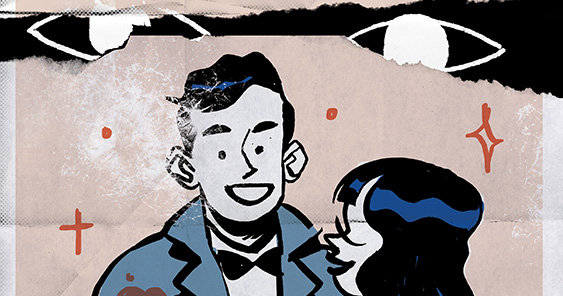Words by Rome Jorge
At the end of a sex video on a porn network site, a window pops up for a wholesome and well-known fashion and merchandise e-commerce site. Beside a hoax article of a fake news site associated with bigotry and partisan politics is a banner ad for a trusted family car brand.
Brands are being associated with fake news, porn, and hate sites. Advertising budgets are enriching fake news, porn, and hate sites. And these brands and agencies might not even know it because ad buying is now automated by programmatic.
Instant and indelible stain
Programmatic are software that determine where best to place advertisements and allow media buyers to bid and buy ad placements directly to the publishing mediums in real time. It can be re-calibrated and fine-tuned throughout the advertising campaign as real time data emerges and points to more effective targeting and messaging. If programmatic algorithms determine it is the right audience and site, a bid is automatically placed in the auction for the ad space on the website. The highest bid is automatically chosen and the winning bid for the website is automatically loaded along with the website. From collecting data, to determining suitability, to placing bids—the entire process takes mili-seconds and does not appreciably lengthen the loading time of web pages.
The problem with anything automated, outsourced, remote, instantaneous, or run by algorithms and artificial intelligence is that it gives the industry the impression that they are distancing themselves from accountability, when the sentiment of today’s generation is exactly the opposite.
Consumers now demand that their brands espouse and reflect their values.
According to McCann Truth Central’s yearly updated study “The Truth About Youth,” 84% of global youth, 86% of youth in the Asia-Pacific region, and 91%of youth in the Philippines believe that brands have more power to make change than the government.
Consumers now demand authenticity and are averse to any evidence of hypocrisy.
The inadvertent or reckless association of wholesome and progressive brands with fake news, porn, and hate sites can ruin a carefully crafted public image of a brand.
In the digital age where screen captures can document such lapses and can incessantly remind consumers of such embarrassing associations long after ad banners and sites have been taken down, brands and agencies need to take responsibility of their media spend immediately.
Human vetting versus automated ad buying
Black lists—a registry of sites brands do not want to be associated with—are already part of programmatic software. Evidently, black lists alone do not work. Porn websites can change domain names and fake news sites can mislabel themselves as parody. Currently, black lists of porn, fake news, and hate sites are not shared among competing programmatic services.
Arguably, agencies are not properly incentivized to effectively ferret out sights that can ruin a brand’s reputation.
More effective than black lists—which tell what sites a brand does not want to be associated with—are white lists—which tell the only sites that a brand wants to be associated with. White lists, though more effective, are more restrictive and like black lists are not currently shared among competing programmatic services.
The use of black and white lists are additional services that represent added cost. According to programmatic platform Adelphic, 70 percent of its ad buyers have implemented a blacklist or whitelist. Volunteer activists have already taken matter into their own hands.
In November 2016, Twitter group Sleeping Giants messaged 1,000 companies and nonprofit groups whose ads appeared on Breitbart, a site associated with fake and biased news. Already more than 400 brands and groups removed their ads, denying Breitbart of advertising revenue. Sleeping Giants vows to continue its advocacy and target other fake news and hate sites.
The identification of porn, fake news, and hate sites currently necessitates human vetting, most often by impartial non-profit volunteer organizations. If these can effectively keep up with highly profitable, well funded, and highly automated operations of constantly mutating porn, fake news, and hate sites remains to be seen.
Illustration by Diigii Daguna









